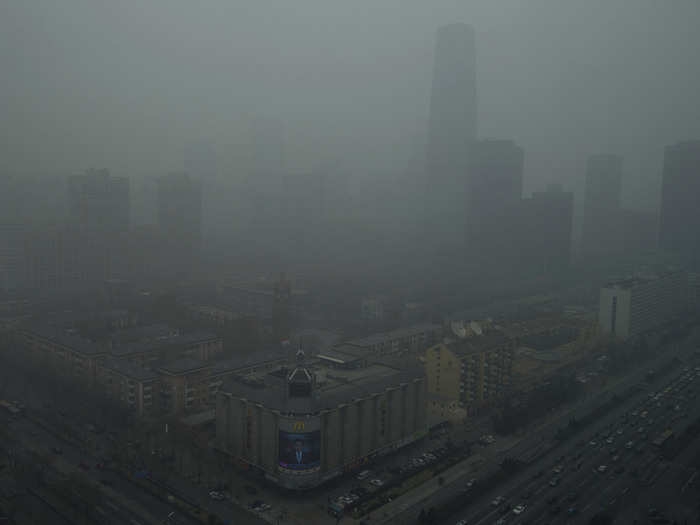- Home
- stock market
- Here's What Shenzhen, China Looked Like Just Before Becoming One Of The Most Important Cities In The World
Here's What Shenzhen, China Looked Like Just Before Becoming One Of The Most Important Cities In The World
First, this is what the city looks like today. Shenzhen is now one of the fastest growing cities in the world.

It boasts one of China's largest ports.
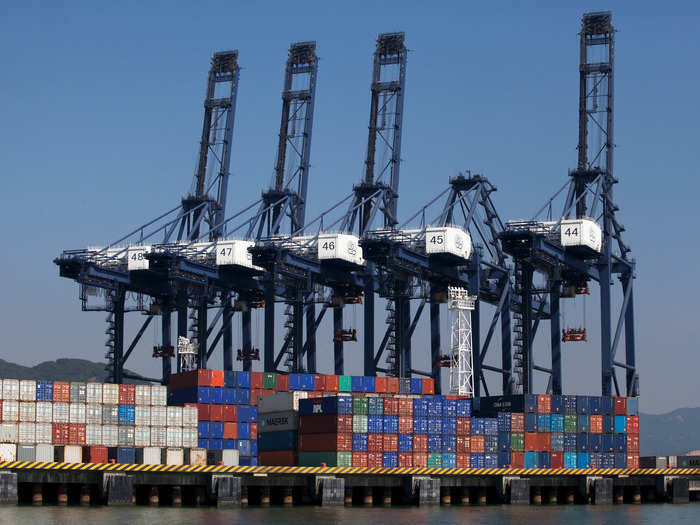
It has its own stock market.
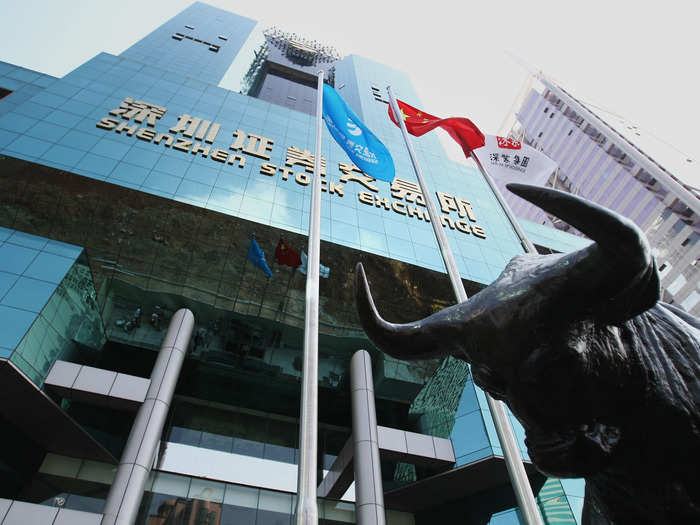
It hosts its own big golf event.
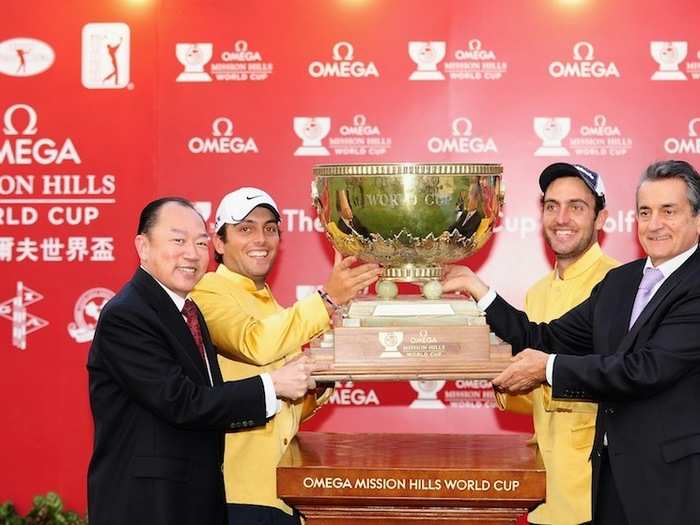
And of course, it's home to the largest Foxconn factory in the world.
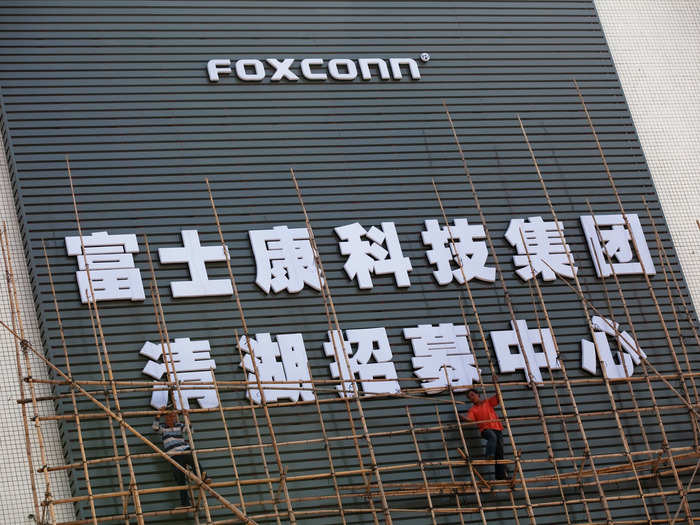
It wasn't always this way...
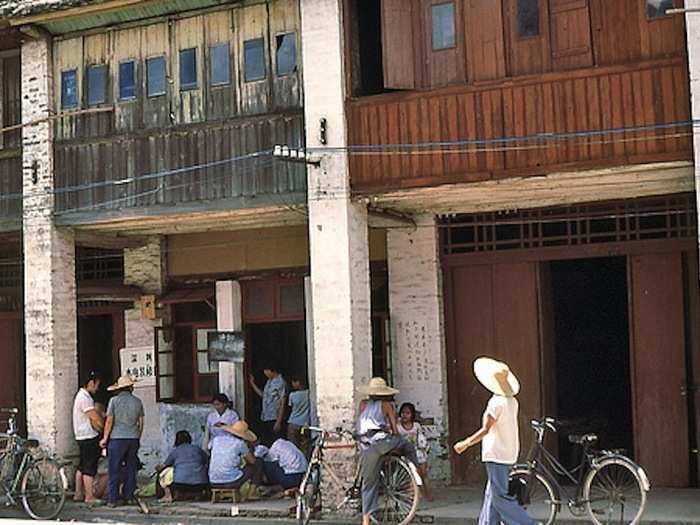
Kowloon Station, Hong Kong, about to depart for Shenzhen.
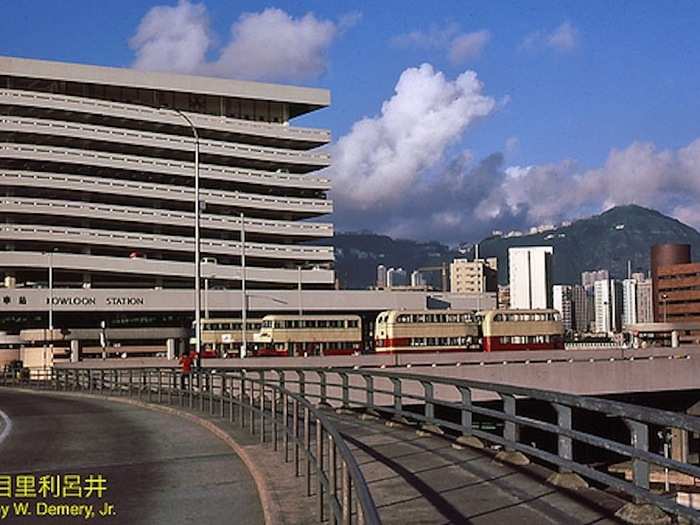
The 'cross-border tours' were, perhaps, not 'quite' as unlikely as traveling across the frontier separating the two Koreas would be today ... but this was definitely something new 'back then!'

The tour assembled at Hung Hom station, which was then the southern terminal of the Kowloon-Canton Railway, British Section. We traveled to Lo Wu station, passed through Hong Kong Immigration, then proceeded to the bridge on foot.
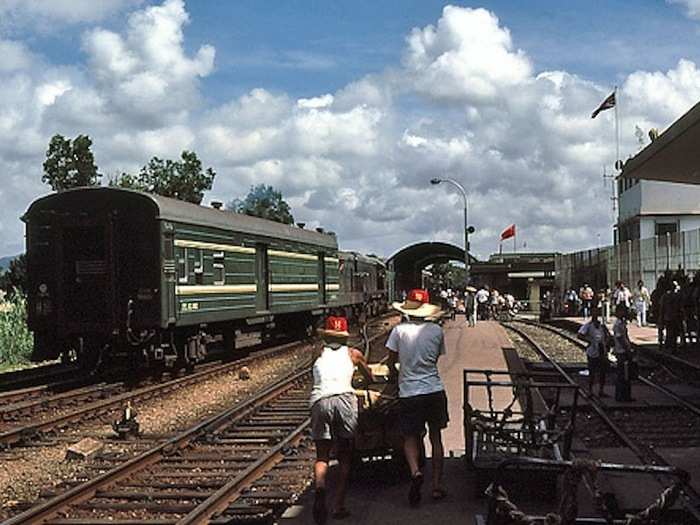
The gap in the roof structure (and the sign, which reads "Station Limit") is located at the HK / China frontier. The old bridge has been replaced, but preserved as a monument. From my notes: '... the first thing I saw besides the red flag with the gold stars was a sign bearing a slogan: 'Long Live the Great Friendship of the Peoples of the World!'
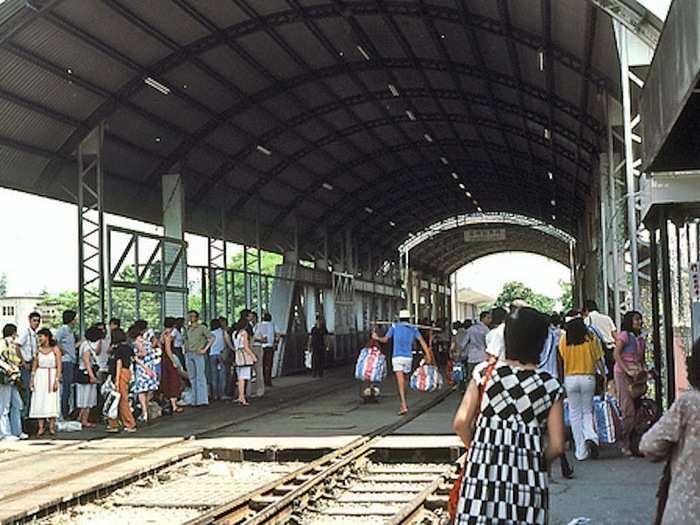
In Shenzhen, just north of the Lo Wu Bridge. Shadows suggest that I was facing south. 'The first thing I noted: 'China drives on the right!'
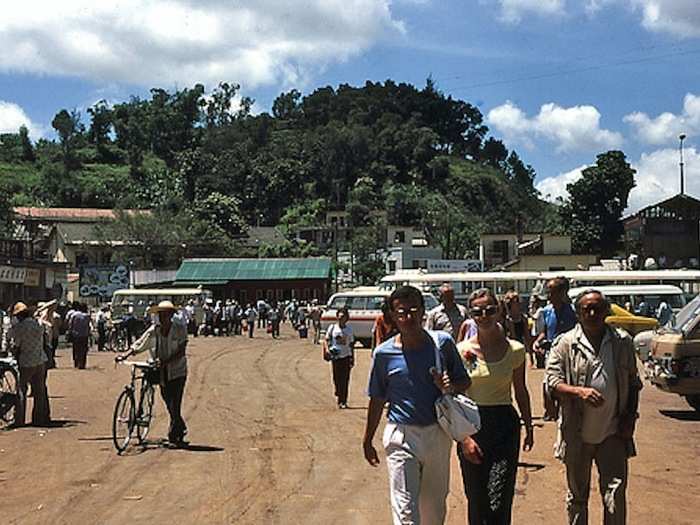
Looking northwest ...... but I am not certain from where. I believe that I took this photo from the window of the tour minibus, en route from Shenzhen station to Shenzhen Reservoir.
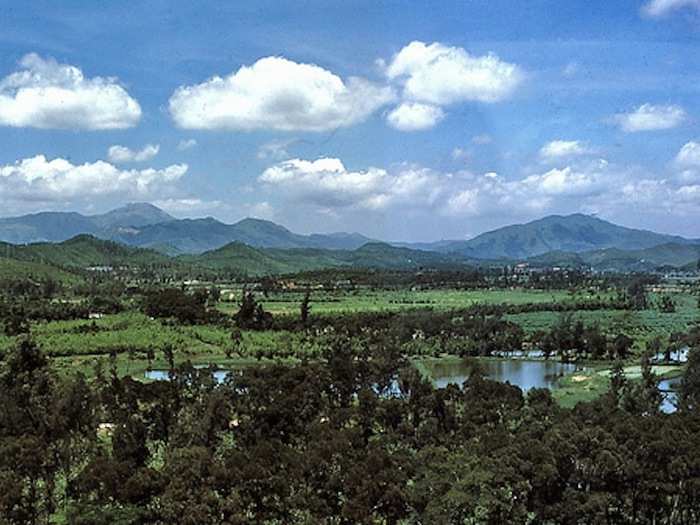
Shenzhen Reservoir, west side, 1980. My notes conflict with the slide sequence numbers. The notes state that we rode in the minibus from Shenzhen station to Shenzhen Reservoir upon arrival. 'Our guide was a Hong Kong girl who worked for China Travel. A man from Peking was also along on the bus. We drove through the dusty town of Shenzhen to the Shenzhen Reservoir, which supplies water to Hong Kong.' I believe this image was taken from the west side of the reservoir, near the south end, looking north."
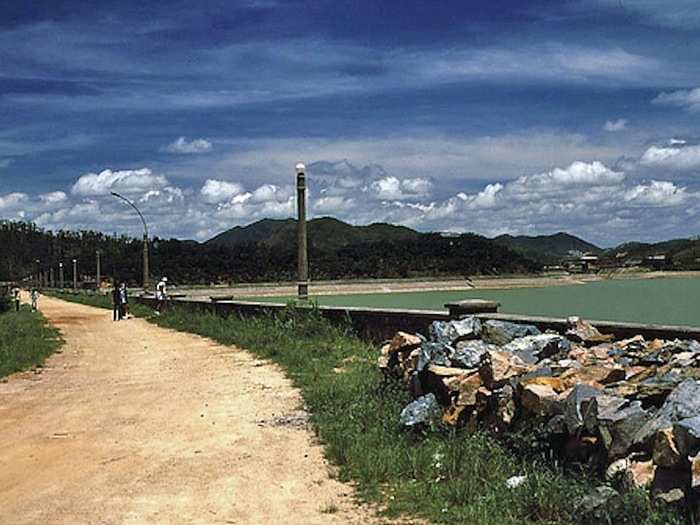
Shenzhen Reservoir, 1980. Looking east. I would not post such an 'uninteresting' image - but for the contrast between 'then' (1980) and 'now.'
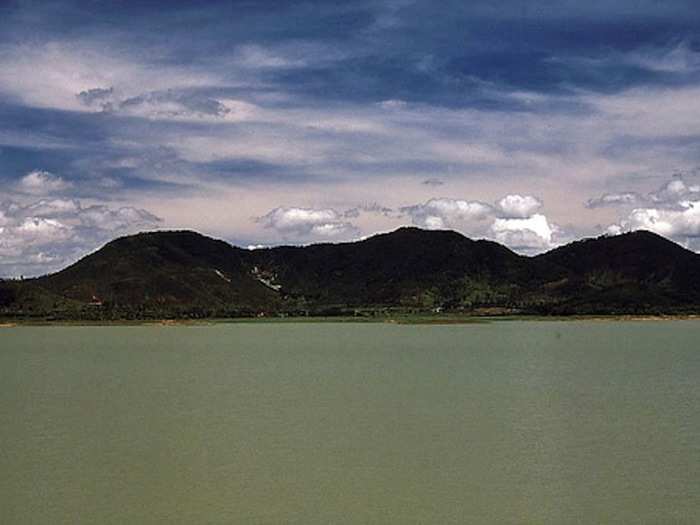
Shenzhen Reservoir and pavilion, 1980. This island, with pavilion, is located near the southeastern corner of the reservoir. I believe this photo was taken from the east side of the reservoir, looking west.
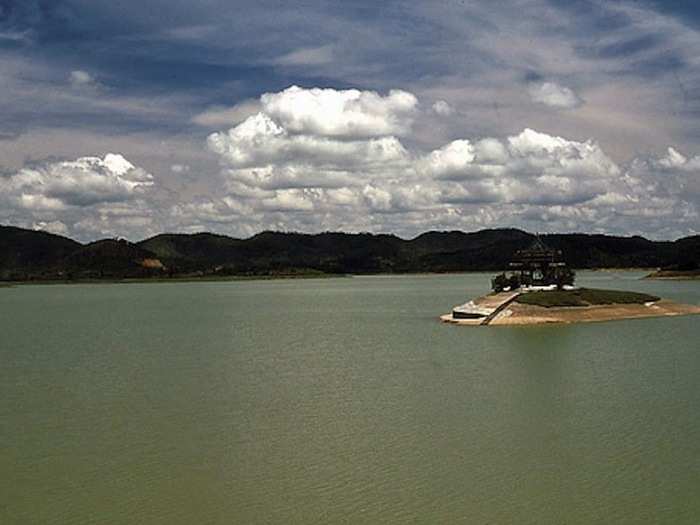
Restaurant at Shenzhen Reservoir, 1980. 'After stopping at a pavilion which had an exhibit on this area, we next went to the restaurant.' I believe this is 'the restaurant.' Notes state that the tour group 'had a good, multi-course Chinese meal.'"
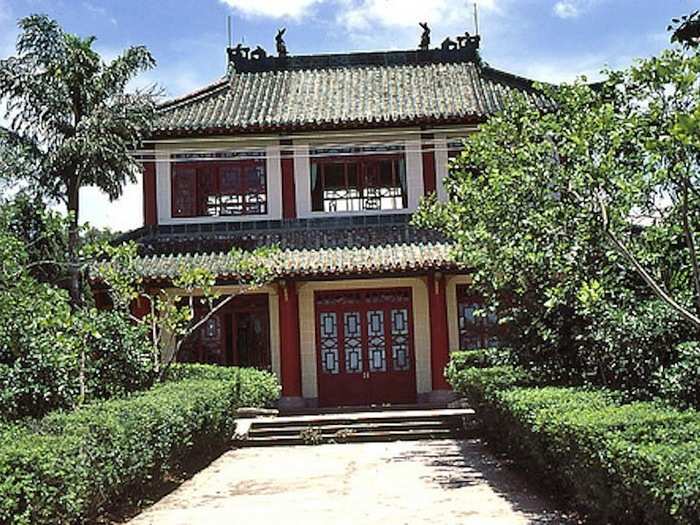
Outside of Shenzhen town, 1980. Notes state that, from Shenzhen Reservoir, 'we then set out for the town itself. We had about 45 minutes to wander about.' Shadows suggest that I was facing east, which - if correct - would mean I walked west a bit, away from the built-up area and the railway.
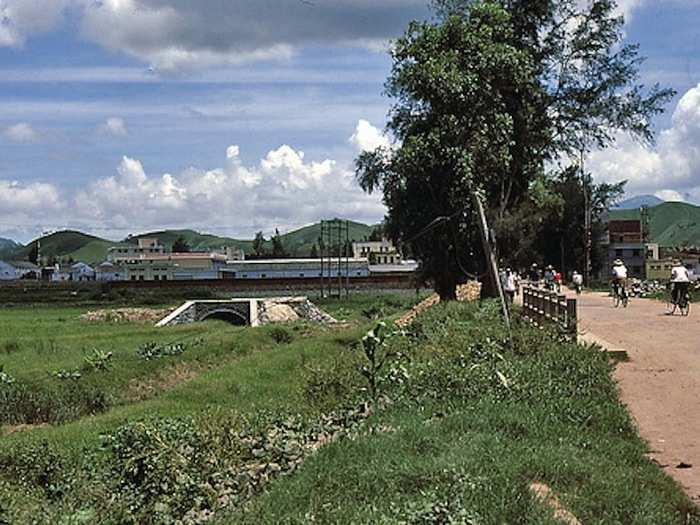
Countryside -1, Shenzhen, 1980. Looking northeast. Part of 'panorama,' continuing from previous photo. I would not post these 'uninteresting' views ... but I wonder what this location looks like today.
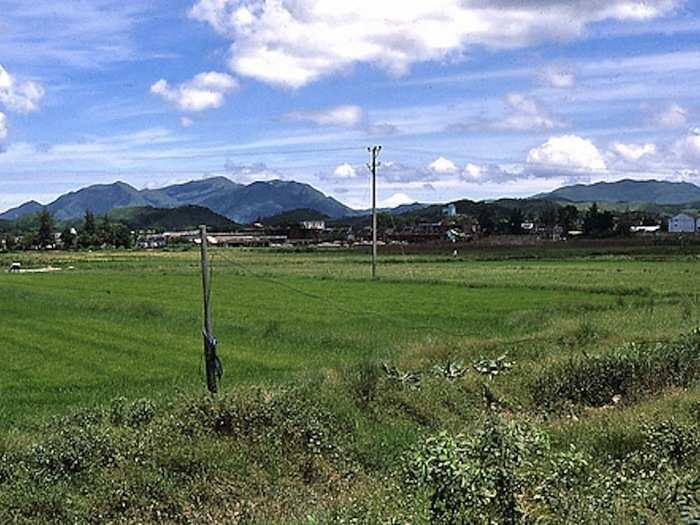
Countryside -2, Shenzhen, 1980. I believe that I crossed the road and faced west-southwest. This area is now solidly built up.
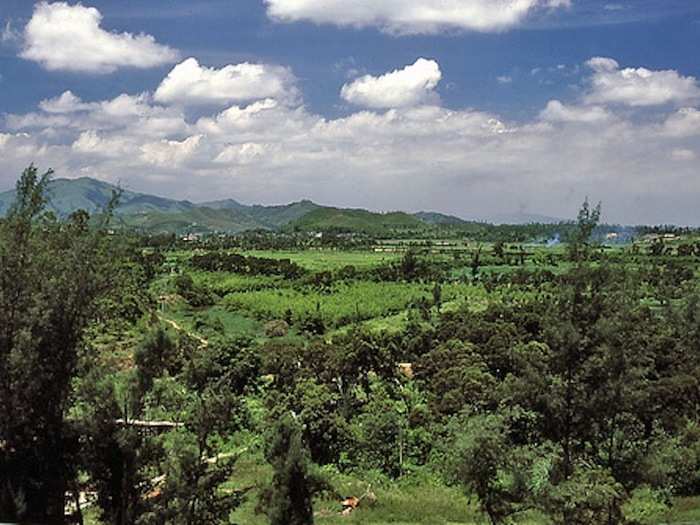
Countryside -3, Shenzhen, 1980 I believe that I was facing west-northwest.
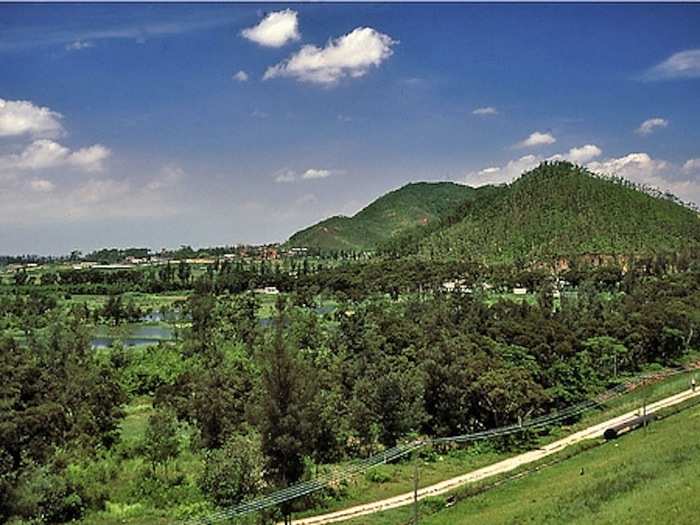
House, Shenzhen, 1980 After lunch, we returned to Shenzhen and had 45 minutes to wander about.
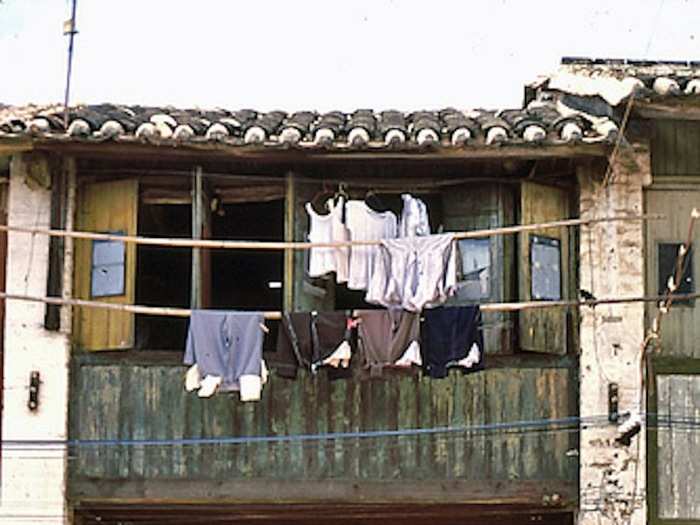
Residential lane, Shenzhen, 1980 Compared to Hong Kong, Shenzhen was a very quiet, sleepy place. This is part of the Luohu district today.
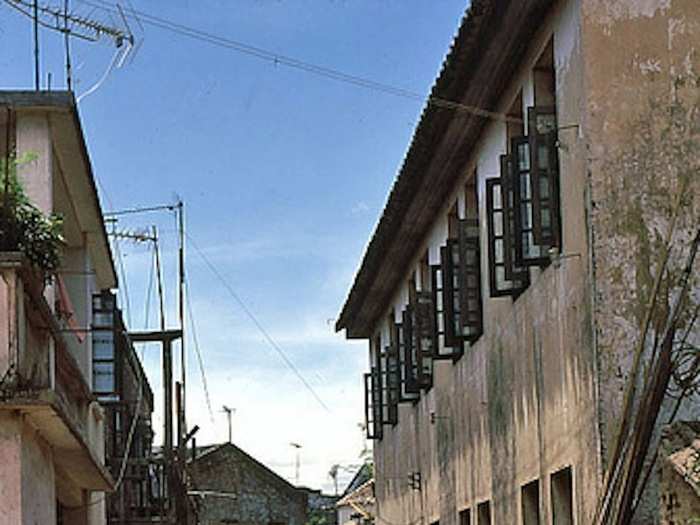
Two-wheel transport, Shenzhen, 1980 Transportation was by foot and bicycle. Because of this, this part of town was remarkably quiet. The loudest sounds were those made by bicycle bells.
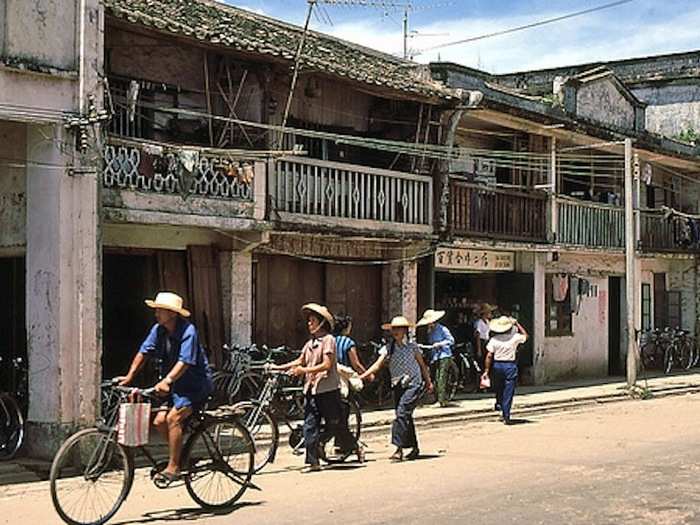
Not a motor vehicle in sight, ??, Dongmén, Shenzhen, 1980 There were motor vehicles in Shenzhen, but I did not see any in this area. "I made a circuit of the town, it was quite - well, dull - but fascinating.
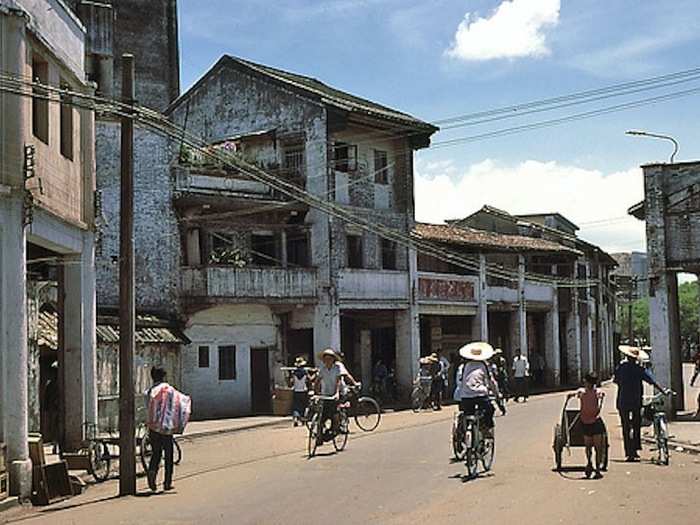
Luohu district, "then" (1980) I certainly did not walk "very far" from the minibus. This area is therefore "not far" from Shenzhen station.
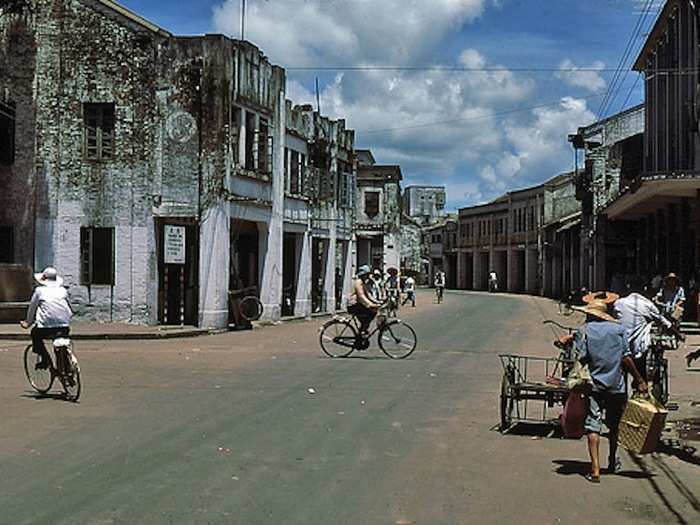
Construction, Shenzhen, 1980. The Shenzhen Special Economic Zone had not been approved, but it was "in the works." This was one of the very few "construction sites" that I saw.
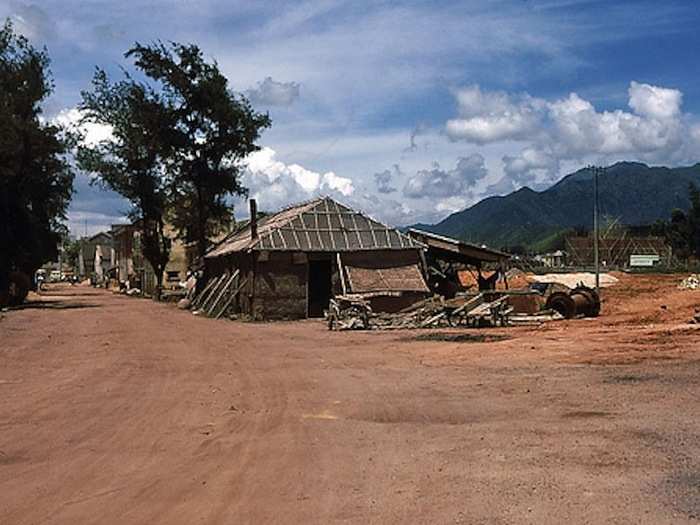
The 'dusty town of Shenzhen,' 1980
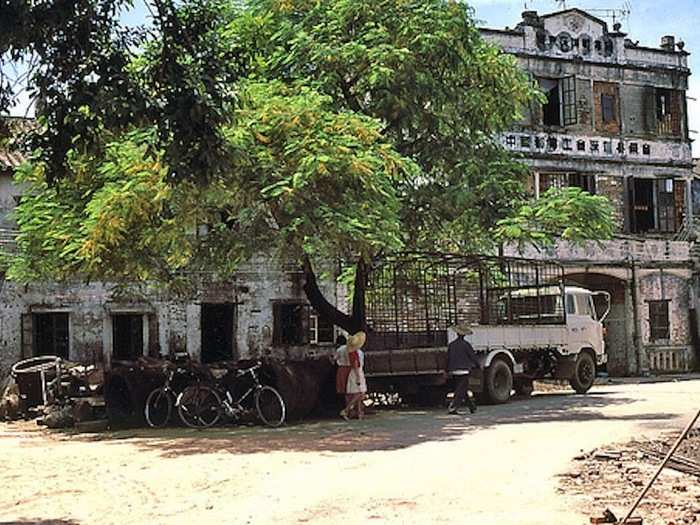
Residential lane, Shenzhen 1980. Again, I would not post an 'uninteresting' photo like this ... but this is Shenzhen, as it was less than 30 years ago...
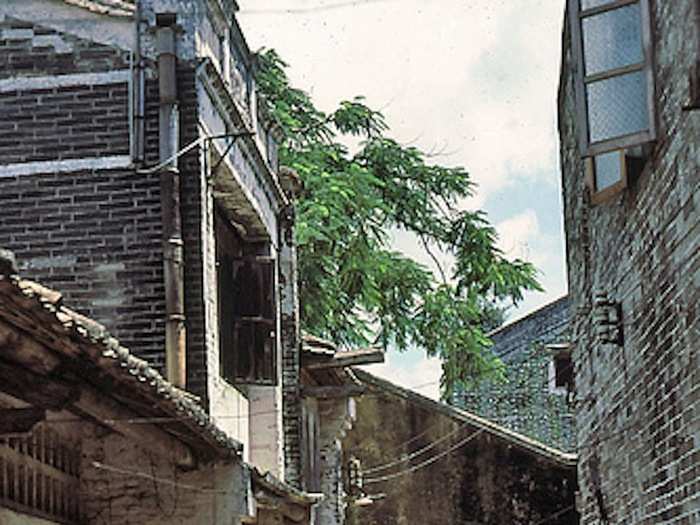
Near 'the center,' Shenzhen, 1980 This photo was taken near the 'busiest part of town.'
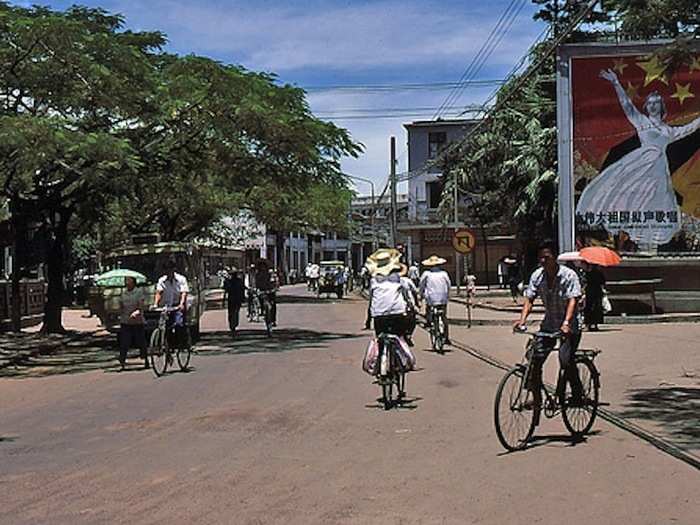
Visitors, Shenzhen, 1980. Clothes and luggage suggest that the two men in the foreground are from Hong Kong.
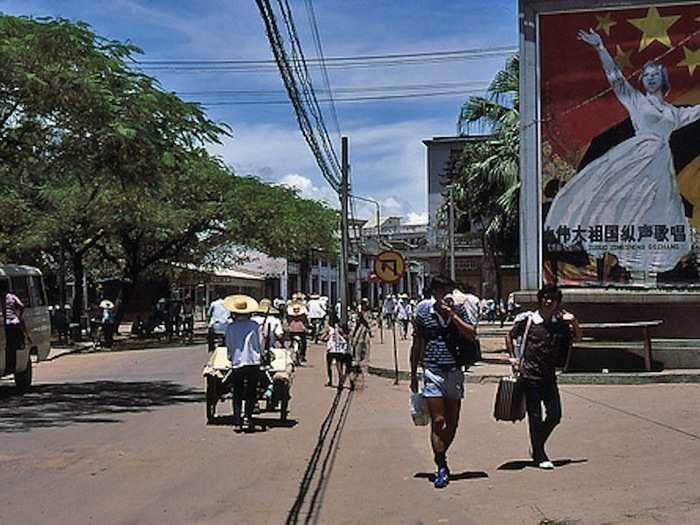
'Main square,' Shenzhen, 1980. This area was the closest thing I saw to a 'main square' in Shenzhen.
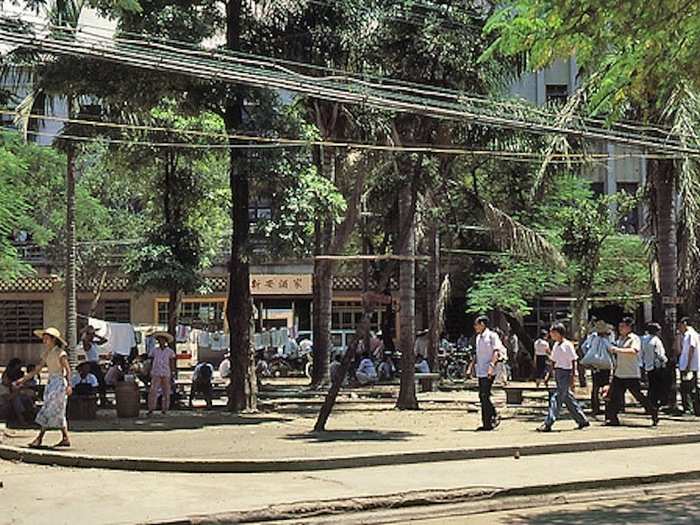
This was some sort of shop - I do not remember what sort. I took this photo, and the following one: '... and then changed money. I quickly gave up the idea of buying anything when I realized that there was nothing suitable to buy - no postcards - and I did not understand the currency. Buying a soda provided a lesson in 'renminbi.' I resolved to re-exchange it.'
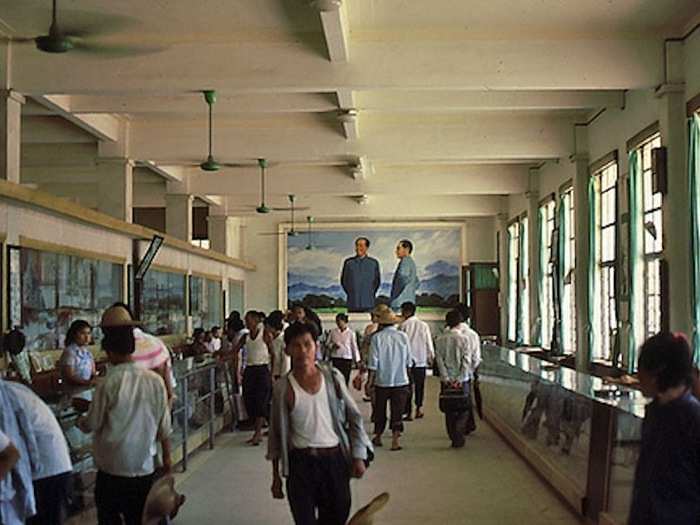
Painting of Mao Zedong and Zhou Enlai. Closer view of the painting visible in the previous photo. I note that Zhou has his back to the sun, and appears to be standing 'closer' to the viewer. Was the artist attempting (clandestinely) to draw attention away from Mao?
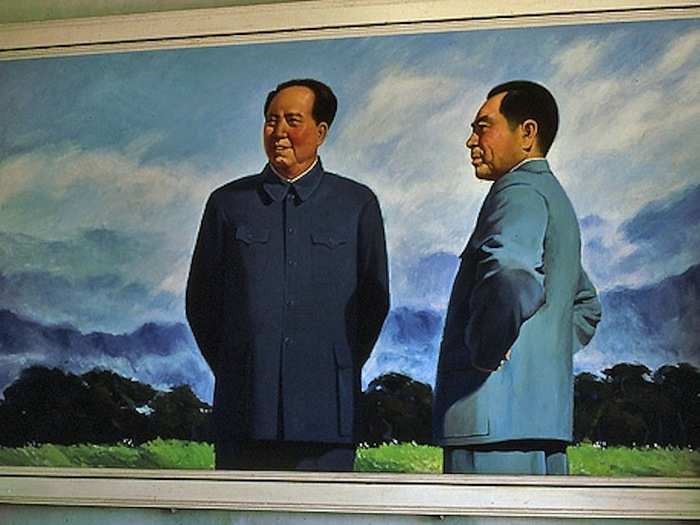
Dongfeng (??) class diesel locomotive, ??, Dongmén, Shenzhen. My first railway photograph in China (... or so I would have said back then). We didn't have the immediate feedback of digital photography back then. However, I knew somehow that this view was not the best. Notes read: 'I could have done better ...' (??, Dongfeng, = 'East Wind,' or 'Oriental').
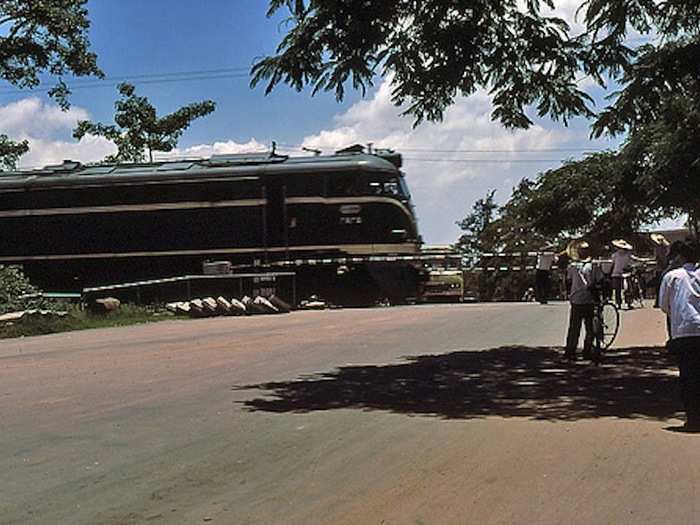
Railway crossing, ??, Dongmén, Shenzhen. Not a motor vehicle in sight.
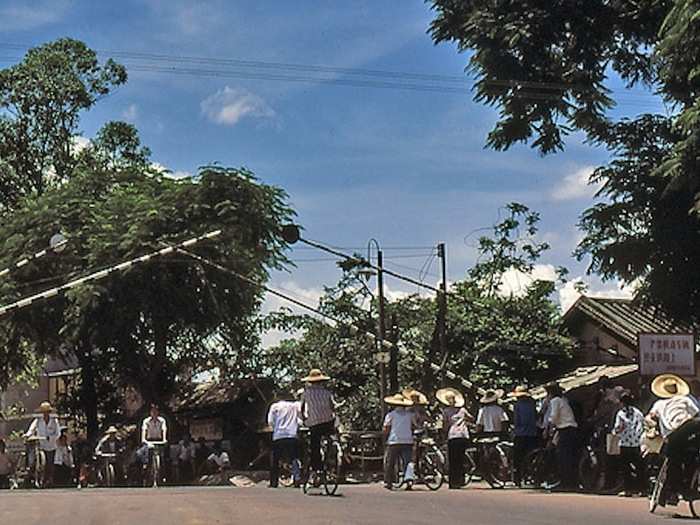
Kindergarten. The last stop on the CITS tour was 'the local kindergarten.' This I found very interesting. Back then, my 'first job' was working as an instructional aide (teacher's assistant) at an elementary school. Schwartz states that schools were 'shut down completely for three years' during the ?????????, Wúchan jiejí wénhuà dàgémìng, 'Great Proletarian Cultural Revolution.'
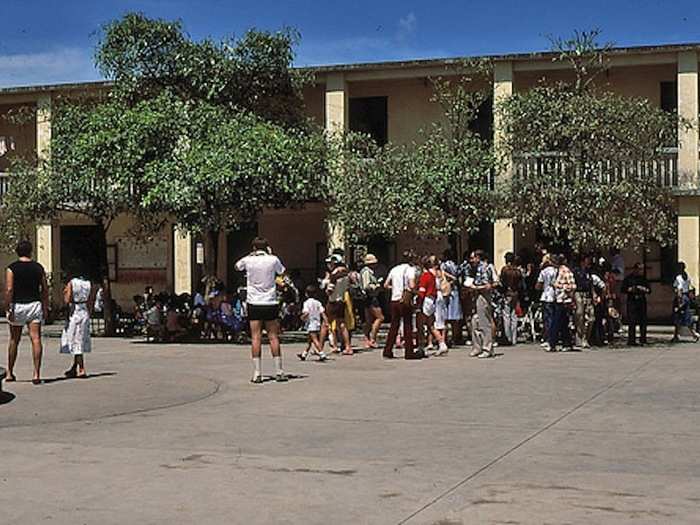
Tour members wandered around the school courtyard, snapping photos. I do not remember any of the teachers or children speaking English. Nor do I remember any tour members speaking Chinese. I might have tried 'Ni hao ma?' or just 'Hello,' but I do not remember. The children appeared to take all of this in stride. They were very well behaved, although I did see a bit of low-key mischief.
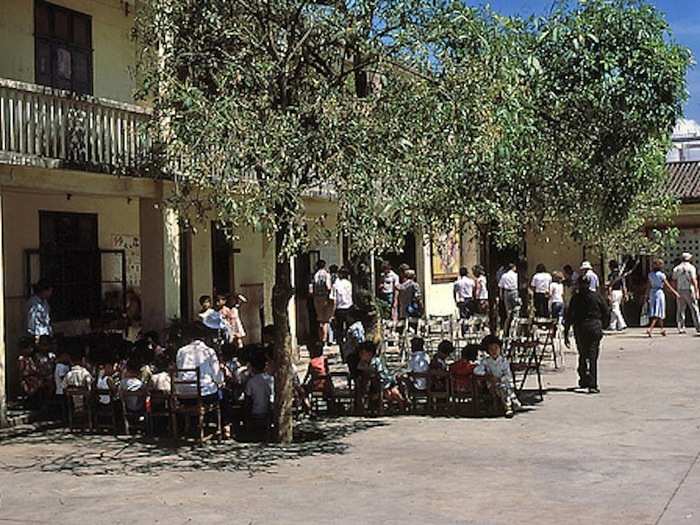
Imagine what a story each of these kids might tell today about the amazing transformation of their city.
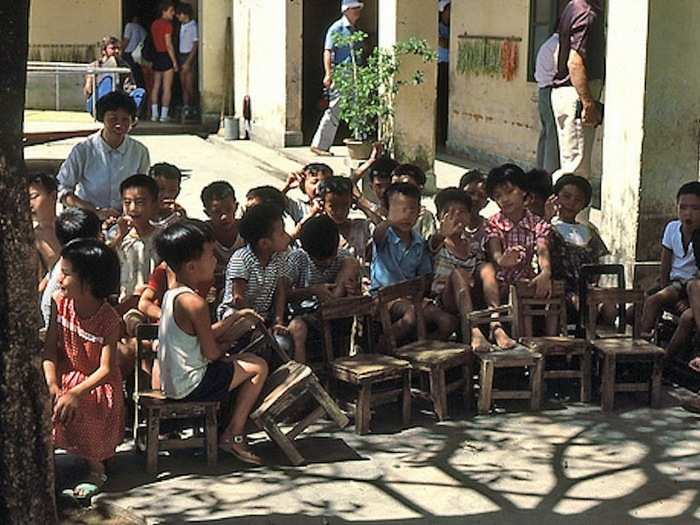
Um, yes, that is me at far right. I posed for this photo to show my coworkers, 'proving that the proud banner of Kit Carson School [Lawndale, California, a Los Angeles suburb] had been displayed in the People's Republic.
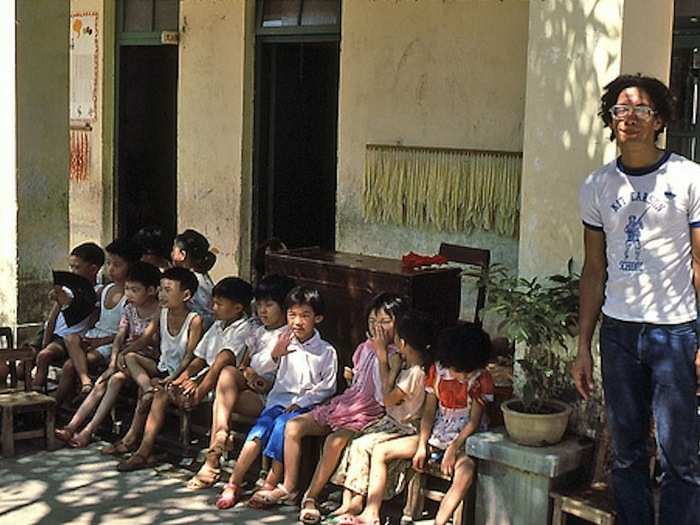
'Look at all those foreigners!' The kids did talk with each other, but they did not make much effort to attract attention from us visitors.
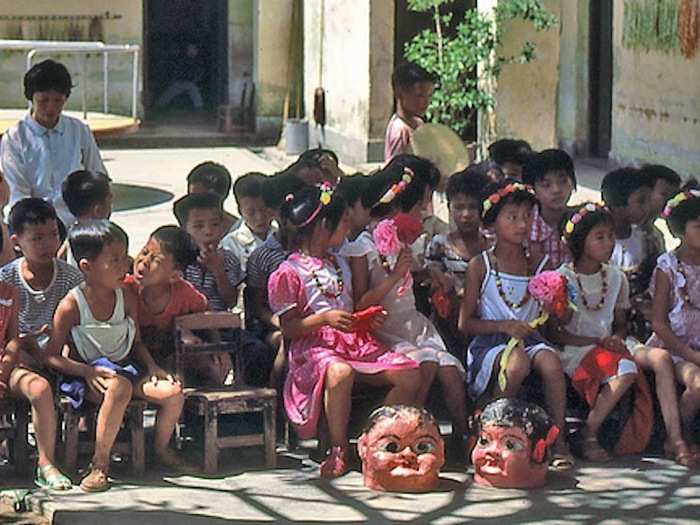
Here's What Shenzhen, China Looked Like Just Before Becoming One Of The Most Important Cities In The World
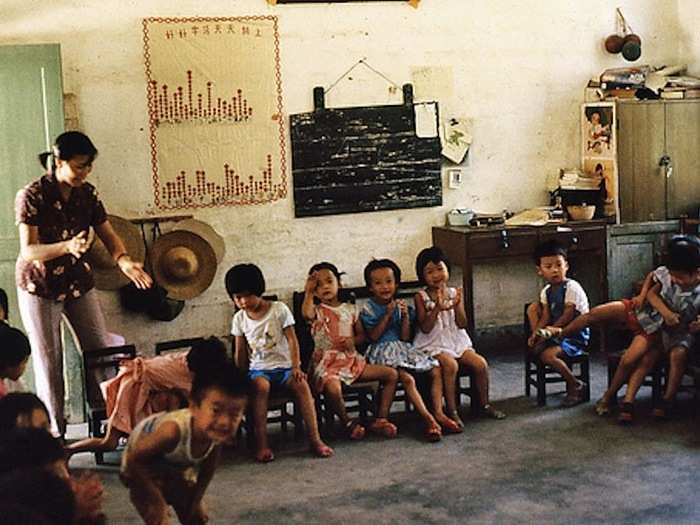
These girls sat and posed for photos. As I remember, they sat here throughout our visit.
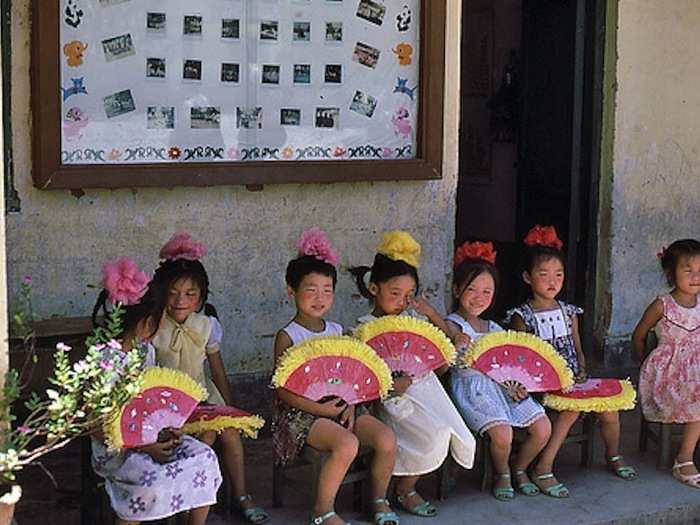
I stepped quietly into a classroom, camera in hand, and again, 'the teacher seemed not to mind." (Available-light image, high-speed Ektachrome film, exposed at ISO 800.) The man in the portrait to the right of ???, Máo Zédong, is ???, Huà Guófeng, Máo's designated successor. He was known as ???????, Yingmíng lingxiù Huá Zhuxí, Wise leader Chairman Hua. ???, Dèng Xiaopíng, gained control of China's economy in 1978, but Huà remained the titular 'paramount leader' at July 1980.
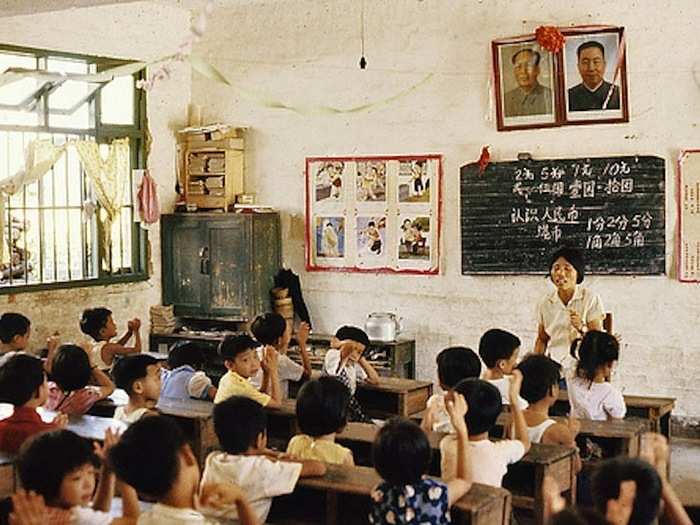
By the water.
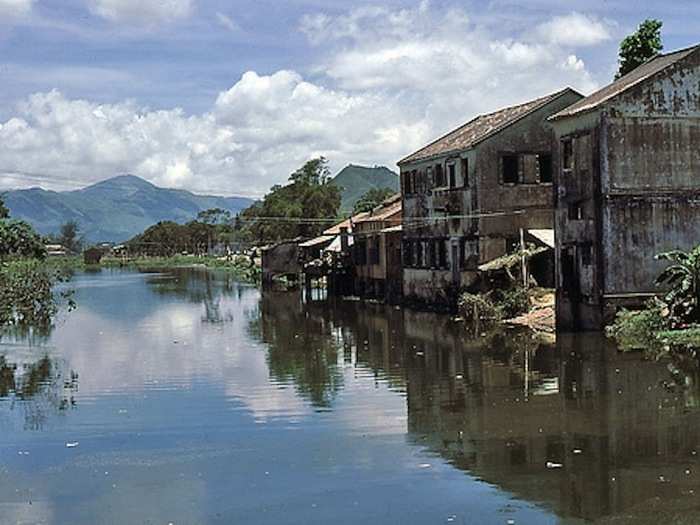
Street scene, Shenzhen, 1980.
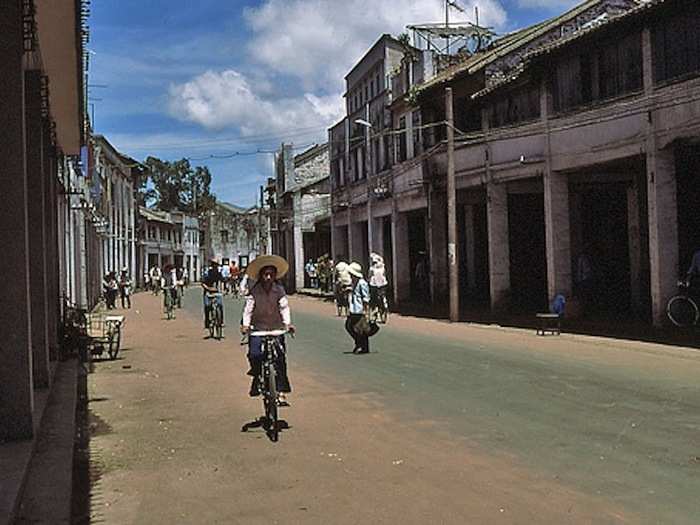
Popular Right Now
Advertisement
